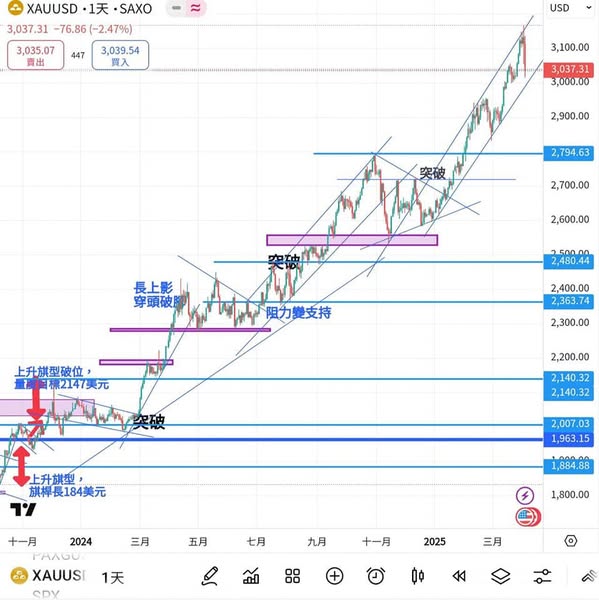The U.S. Independence Day saw a bloodbath in the market, with gold hitting a new high before plummeting.
Last week, due to the US tariff war, the global financial market was in a mess. Gold once played its safe-haven role and rose sharply, but then fell back. The stock market, bond market, foreign exchange market and commodity market were all affected, experiencing severe fluctuations. Continuing the upward trend of the previous week, the gold price opened higher on Monday and broke through the 3100 mark, unstoppable.
US President Trump said that on April 2nd, the tariff policy would be announced, imposing tariffs on countries around the world, and claimed it to be the liberation day of the United States. The trade war is about to break out. Capital flows into the gold market for hedging, and the rise slows down only when it reaches the pressure line of the ascending track.
On April 2nd, Trump disclosed more details on tariffs, and tariffs were imposed on exports from many countries. Gold prices hit a record high of $3,167.65 in the Asia-Pacific region on Thursday. Later, it was constrained by the resistance line of the ascending channel. With the tariff policy already announced, the market sentiment of "buy on rumors, sell on facts" led to a sharp decline in gold prices to $3,057. Later, it rebounded to $3,130. The price fluctuation was significant. However, an even more volatile trend emerged on Friday.
China announced countermeasures against all US original products with a 34% retaliatory tariff in the evening, which once again shook the global stock and bond markets. The gold market rose to 3130 but failed to stabilize. Another focus of the market was the performance of the US labor market. The non-farm payroll report showed an increase of 228,000, far exceeding expectations. The gold price fell below the intraday low again. What's worse, the chairperson of the Federal Reserve, Powell, turned hawkish on interest rates due to concerns that the tariff policy would trigger inflation. The gold price plunged to 3015 dollars, with a fluctuation range of 120 dollars. Other commodity prices also dropped sharply, with crude oil and silver recording a 7% decline.
Looking ahead to this week, the trade war is at its peak and will continue to influence market sentiment. Therefore, it is expected that the gold price will remain volatile. The medium-term upward trend support line and the psychological threshold of $3,000 should not be lost; otherwise, the pressure to give back gains will increase. Moreover, there will be inflation data before the weekend, and there is a serious divergence in the current direction of interest rates.
Powell wants to maintain high interest rates, but the market is also concerned that a recession will force the Federal Reserve to cut rates further. This week's CPI and PPI data will provide significant insights into inflation. Let's take a look at the market situation and share our views.
Previous Article Next Article


 Whatsapp
Whatsapp Telegram
Telegram
